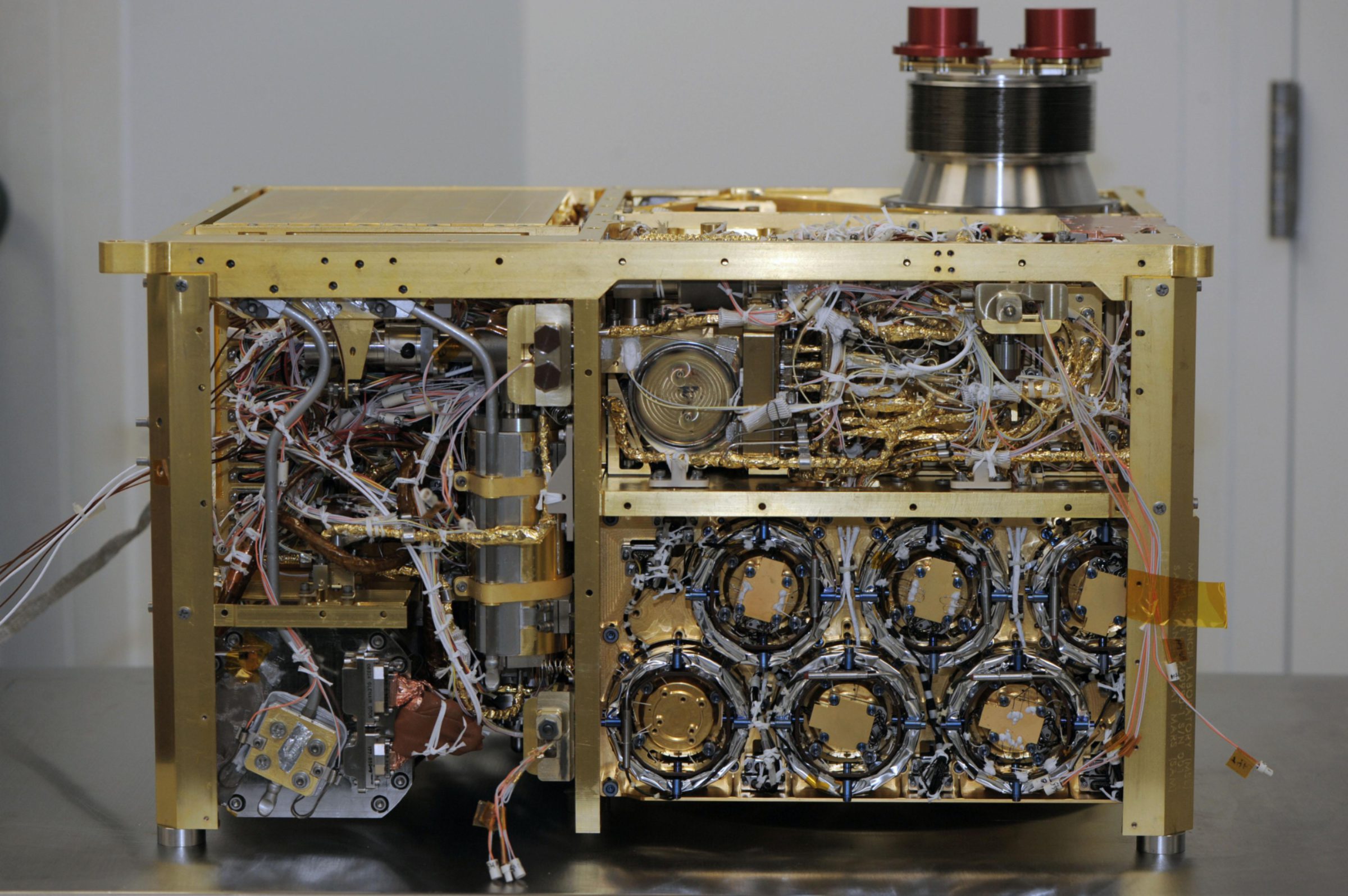Curiosity's SAM instrument, from the side (side panel removed)

SAM's solid sample inlet tubes (SSIT), visible at top right, are the routes by which Curiosity's robotic arm will deliver samples of soil and powdered rock for analysis. Other major components of SAM include the sample manipulation system and the gas processing system. The gas processing system uses transfer lines, heaters, temperature sensors and turbomolecular pumps.
The tunable laser spectrometer uses absorption of light at specific wavelengths to measure concentrations of selected chemicals, such as methane, carbon dioxide and water vapor. It also identifies the proportions of different isotopes in those gases. Isotopes are variants of the same element with different atomic weights, and their ratios can provide clues about the planet's history.
The quadrupole mass spectrometer identifies gases by the molecular weight and electrical charge of their ionized states. It will check for several elements important for life as we know it, including carbon, nitrogen, sulfur and oxygen contained in volatile molecules.
The gas chromotograph separates different gases from a mixture to aid identification. It has its own detector but also feeds the separated fractions to the quadrupole mass spectrometer and the tunable laser spectrometer for more detailed analysis.



 Explore Worlds
Explore Worlds Find Life
Find Life Defend Earth
Defend Earth

